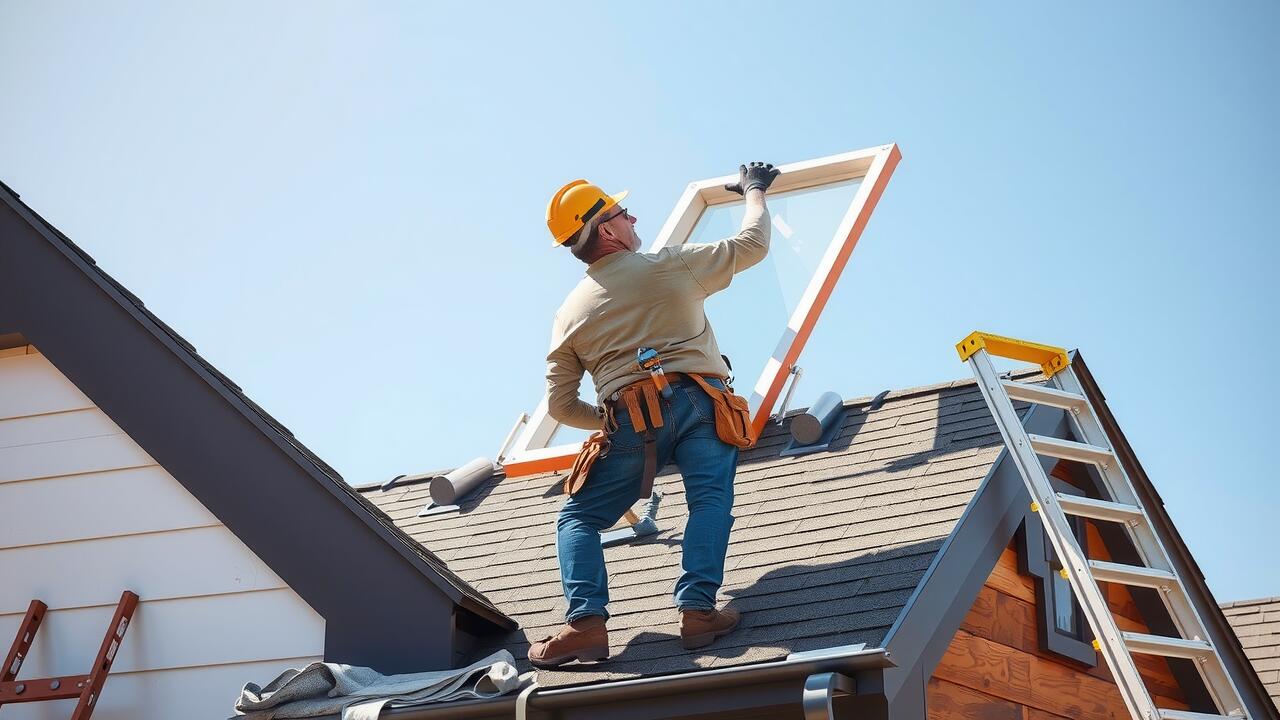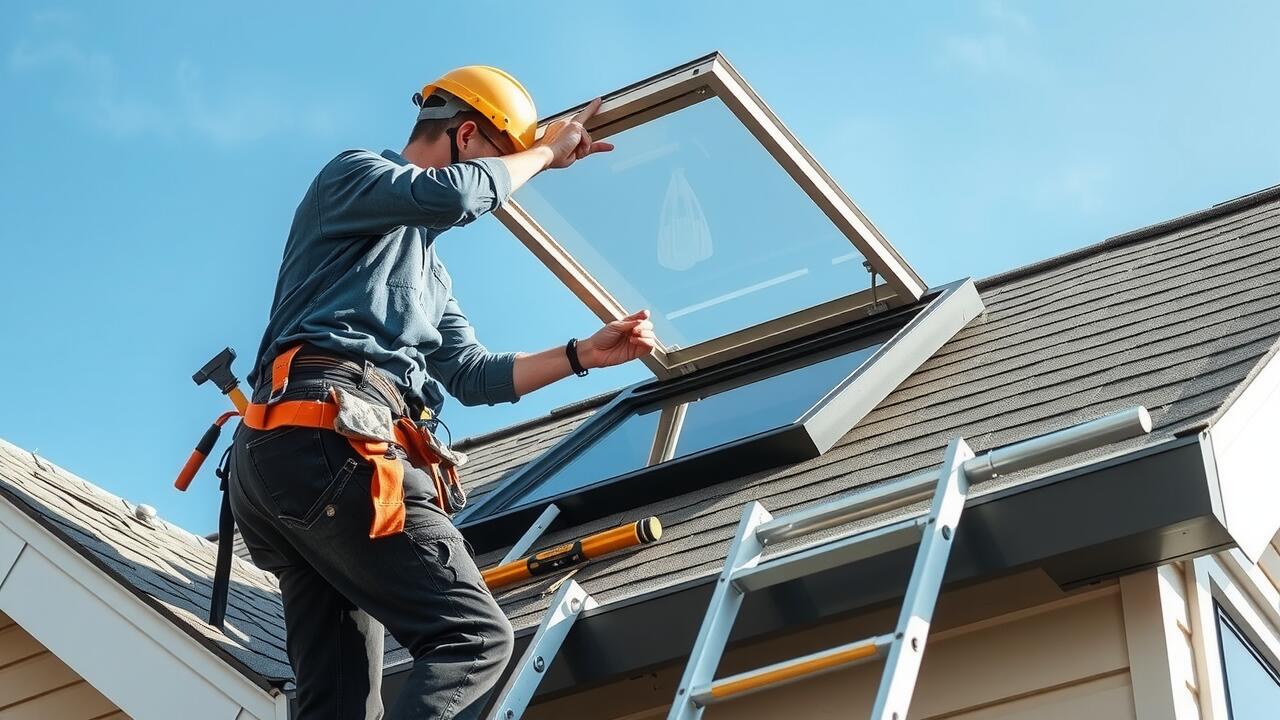
Skylight Materials and Durability
Skylights are constructed from various materials, each offering different levels of durability and performance. Common choices include acrylic, polycarbonate, and glass. While acrylic and polycarbonate are lightweight and resist shattering, they can suffer from scratching and UV degradation over time. Conversely, glass provides superior clarity and insulation but typically weighs more, necessitating careful consideration during skylight installation to ensure the structure can support the added load.
The choice of material significantly impacts the long-term durability of skylights. High-quality glass options are often treated to resist UV rays and prevent condensation, enhancing their lifespan and maintaining clarity. When planning for skylight installation, it’s crucial to assess the material’s ability to endure environmental stresses such as temperature fluctuations and potential weather-related impacts. Investing in durable materials will ultimately lead to a more effective and long-lasting skylight system.
The Importance of Quality Glass
The choice of glass used in skylight installation significantly impacts both performance and durability. High-quality glass provides better insulation, reducing heat loss in winter and preventing excessive heat gain in summer. This can lead to more stable indoor temperatures and lower energy costs. Additionally, premium glass can resist impacts and scratches, ensuring clarity and longevity.
Moreover, the type of glass also influences UV protection. Quality glass often comes with coatings that block harmful ultraviolet rays, helping to preserve the integrity of furnishings and flooring beneath the skylight. When selecting materials for skylight installation, considering factors such as thermal efficiency and UV protection is essential for achieving not only aesthetic appeal but also maintaining functionality over time.
Potential Structural Problems
Skylight installation can introduce specific structural challenges that homeowners may overlook. The added weight of a skylight requires proper reinforcement of the roof structure to ensure it can bear the load. Failing to assess and strengthen the surrounding framework can result in sagging or even increase the risk of roof failure over time. This concern becomes particularly critical in regions with heavy snowfall or adverse weather conditions where the load on the roof can fluctuate significantly.
Moreover, improper installation can lead to further structural issues, such as leaks and compromised insulation. If a skylight is not sealed correctly, water penetration can cause damage to roofing materials and framing. This not only affects the structural integrity of the home but also leads to expensive repairs and potential mould growth. Homeowners must pay close attention to both the installation process and the ongoing maintenance to prevent these potential structural problems from arising.
Weight and Load-Bearing Issues
Weight distribution is a crucial factor to consider during skylight installation. The added weight of a skylight, particularly if it is a larger model or made from heavier materials like glass, can place significant stress on the supporting structure. If the roof is not designed or reinforced to handle this additional load, it can lead to sagging or even structural failure over time. Homeowners must ensure that the framework beneath the skylight is adequately supported to prevent long-term issues.
Proper planning and assessment are vital for addressing potential load-bearing concerns. Before proceeding with skylight installation, consulting a structural engineer or an experienced contractor can provide insights into the necessary reinforcements. Adjustments might include adding extra beams or modifying existing structures to distribute the weight evenly. Failing to take these steps can result in costly repairs, making it essential for homeowners to prioritise structural integrity during the installation process.
Aesthetic Choices and Challenges
Skylight installation can significantly enhance the aesthetic appeal of a home. The influx of natural light can create a warm and inviting atmosphere. Additionally, skylights can help highlight architectural features and improve the overall ambience of a room. However, selecting the right style, shape, and size requires careful consideration to ensure that it complements the existing design of the house.
Not all skylights are suitable for every home, and mismatches can lead to visual dissonance. Homeowners must take into account the proportions and layout of the space when deciding on skylight placement. A poorly positioned skylight might disrupt the flow of the room. Balancing light, aesthetic value, and functionality is essential for achieving desired results in skylight installation.
Integrating Skylights into Home Design
Incorporating skylights into a home’s design requires careful consideration of both aesthetics and functionality. Selecting the right location is crucial; placing skylights in areas that receive ample natural light enhances a space while also improving energy efficiency. Proper orientation can maximise sunlight exposure, creating a warm and inviting atmosphere indoors. The choice of size and shape also plays a significant role, as larger skylights can flood a room with light but may require structural adjustments to support their weight.
Skylight installation can present challenges, particularly when integrating these features into an existing architectural design. Homeowners must consider the slope of the roof and any potential obstructions, such as chimneys or overhanging branches. It is important to maintain the balance between aesthetics and practicality, ensuring that the skylight complements the overall design while serving its intended purpose. Addressing these factors during the planning phase helps ensure a successful and harmonious addition to the home.
FAQS
What are the most common problems associated with skylights?
Common problems with skylights include leaks, poor insulation, and potential structural issues due to improper installation or inadequate support.
How can I prevent leaks in my skylight?
To prevent leaks, ensure proper installation, regularly inspect seals and flashings, and maintain the surrounding roofing materials to divert water away from the skylight.
Are certain skylight materials more durable than others?
Yes, certain materials like tempered glass and polycarbonate are generally more durable and resistant to impact and weathering compared to traditional glass.
What structural issues should I be aware of when installing a skylight?
Potential structural issues include inadequate load-bearing support, which can lead to sagging or even collapse, and ensuring the roof’s integrity is maintained during installation.
How do skylights impact the aesthetic of a home?
Skylights can enhance natural light and create a sense of openness, but they can also pose design challenges, such as integrating them seamlessly into the existing architecture and ensuring they complement the overall style.
